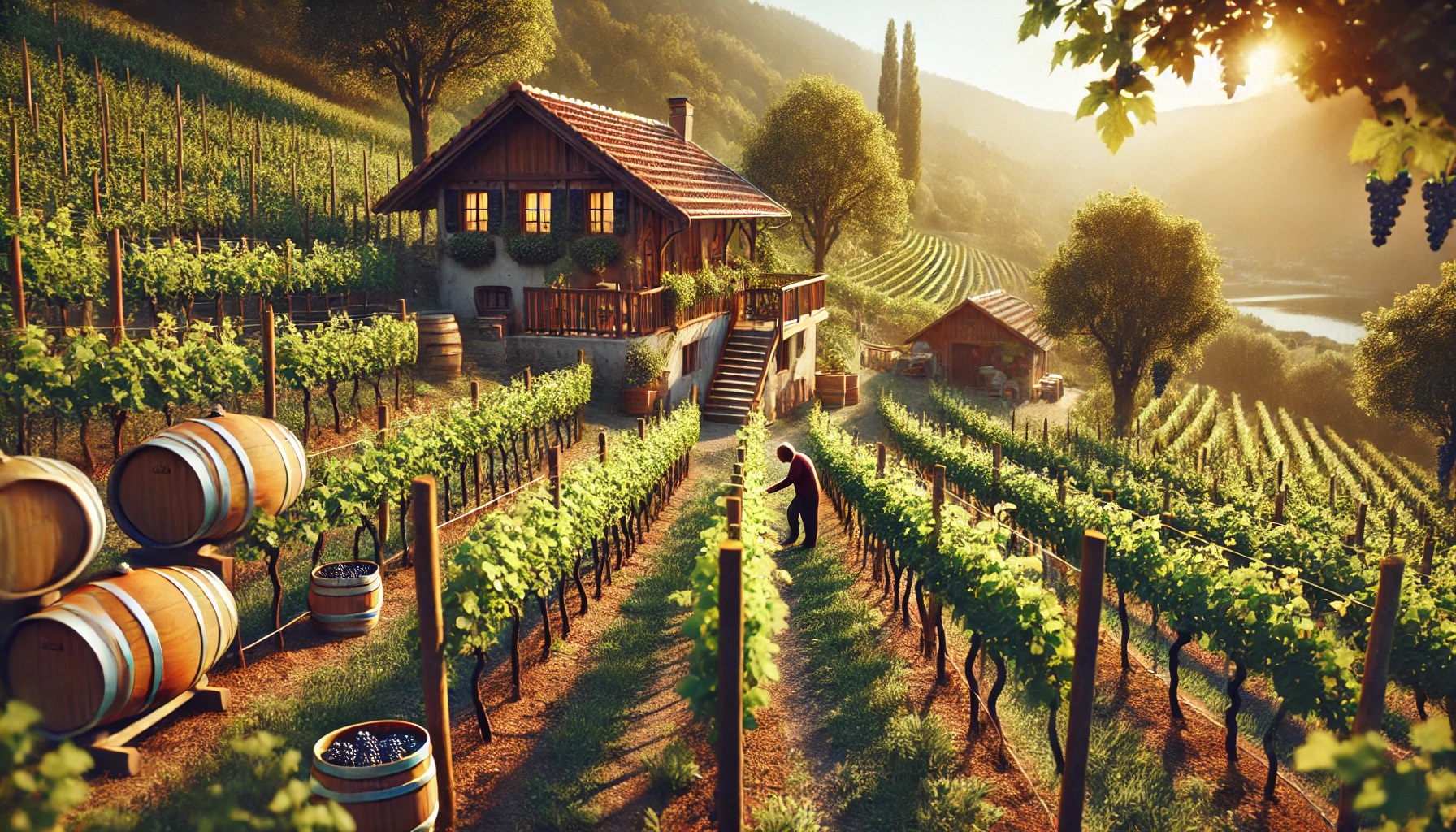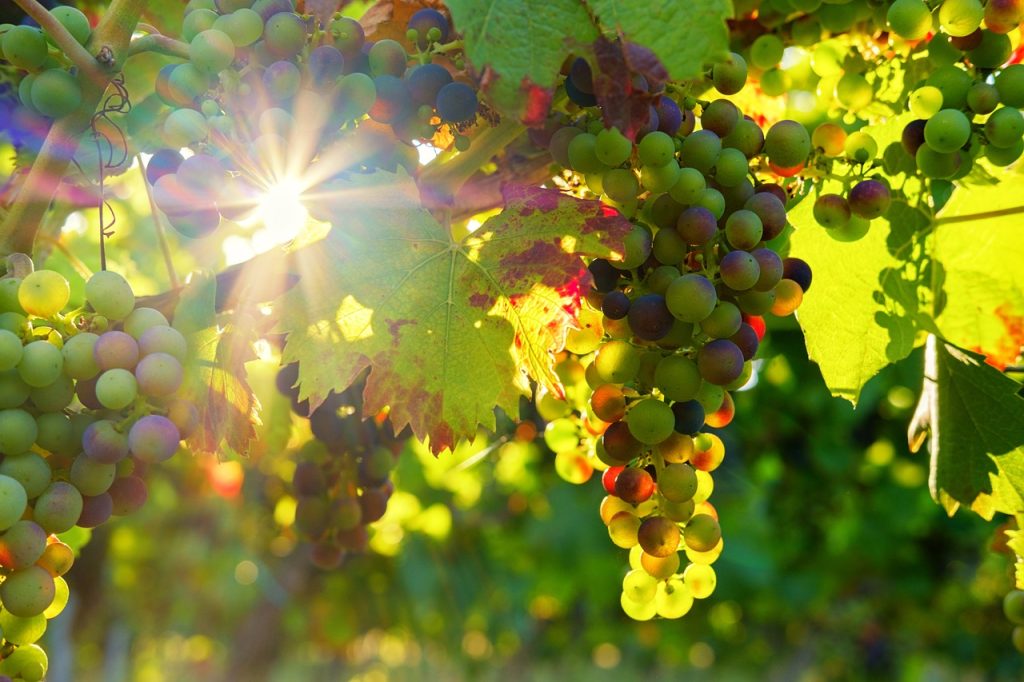
There’s something magical about the idea of walking through your own vineyard, watching the vines grow, and eventually sipping wine made from grapes you cultivated yourself. You might think this dream is reserved for those with sprawling estates and endless rows of vines, but the truth is, you don’t need vast land or a team of experts to start a vineyard. Whether you have a backyard or a small plot of land, you can begin your own wine journey with a little planning and passion. This guide will walk you through the essentials—from selecting grape varieties to harvesting and bottling—so you can turn that small piece of land into your own little vineyard.
1. Choosing the Right Grape Variety
The first step in creating a successful small vineyard is choosing the right grape variety for your location. Grape varieties differ in their climate and soil requirements, so it’s crucial to match your choice with the conditions where you live. If you’re in a cooler climate, varieties like Chardonnay or Pinot Noir are great options. Warmer regions might benefit from planting Cabernet Sauvignon or Syrah. Do some research on what grows best in your area, or even ask local vineyards for advice.
For beginners, it’s also good to focus on grape varieties that are resilient and easier to grow. This helps reduce the complexity in your first few seasons. And remember, since you’re starting small, you can prioritize quality over quantity, focusing on crafting something truly special.
2. How Much Land Do You Need?
You don’t need acres upon acres of land to start a vineyard. In fact, you can plant a small vineyard on less than an acre and still produce a significant amount of wine. Typically, a single vine will produce enough grapes for about one bottle of wine per season. So, if you plant 100 vines, you could potentially produce 100 bottles of wine each year. The space required for this? Approximately one-quarter of an acre!
If your plot is even smaller, that’s perfectly fine—start with 10 to 50 vines, and you’ll still be able to make a few cases of wine each year. This way, you’ll get hands-on experience in vine care and wine production without overwhelming yourself.

3. Preparing Your Plot
Before you get those vines in the ground, you’ll need to prepare your plot. Grapevines thrive in well-drained soil, so if you have heavy clay soil, you might need to amend it by mixing in sand or compost to improve drainage. It’s also worth testing your soil’s pH level—grapevines prefer slightly acidic soil, with a pH between 5.5 and 7.0. You can easily adjust the soil pH by adding lime (to raise it) or sulfur (to lower it).
Next, plan your vineyard layout. Grapevines should be spaced about 6 feet apart in rows that are spaced 8 feet apart. This allows for optimal air circulation and sunlight exposure. And don’t forget to plan for irrigation, especially if your region experiences dry seasons. Drip irrigation systems are ideal for small vineyards, as they deliver water directly to the roots, minimizing waste.
4. Essential Tools for Small-Scale Winemaking
As you dive into your vineyard project, you’ll need a few essential tools. Here’s a basic list to get you started:
- Pruning shears: Used to keep your vines trimmed and healthy.
- Trellis system: To support the growing vines as they climb.
- Vineyard netting: To protect your grapes from birds and other animals as they ripen.
- pH and soil testers: To ensure your soil conditions are optimal.
For winemaking, you’ll also need some specialized equipment:
- Crusher and destemmer: To process your grapes after harvesting.
- Fermentation vessel: A barrel or stainless steel tank where your wine will ferment.
- Press: To extract the juice from your grapes.
- Siphons and bottles: For bottling and storing your finished wine.
Many of these tools can be bought second-hand or even rented from local winemaking suppliers to keep costs down for beginners.
5. Caring for Your Vines
Once your vineyard is planted, the real work begins. Grape vines require care throughout the year, but don’t worry, it’s a rewarding process. In the spring, focus on pruning. Grapevines need to be pruned back each year to encourage healthy growth and fruit production. You’ll also want to fertilize in the early season with organic compost or a balanced fertilizer.
Pest control is another aspect to keep an eye on. Common vineyard pests include birds, insects, and even deer. Vineyard netting, as mentioned earlier, can help protect your grapes, while organic pest control methods such as neem oil can keep harmful insects at bay.
6. Harvesting: When and How to Pick Grapes
The moment you’ve been waiting for—harvest time! Grapes are typically harvested in late summer or early fall, depending on your variety and location. You’ll know they’re ready when they reach the desired sweetness level (measured in Brix) and the seeds inside have turned brown.
For small-scale vineyards, hand-picking is the way to go. It’s gentle on the vines and allows you to carefully select the best fruit. Once harvested, get ready to process the grapes quickly to preserve their flavor and freshness.
7. From Grape to Bottle: The Basics of Winemaking
Now comes the magic—turning those grapes into wine! After harvesting, you’ll need to crush and de-stem the grapes. From there, the juice is fermented in a container (like a barrel or stainless steel tank) with yeast to convert the sugars into alcohol. Depending on the type of wine you’re making, fermentation can take anywhere from a few days to a few weeks.
After fermentation, you can press the grapes to extract the remaining juice and transfer the wine to bottles or barrels for aging. Some winemakers age their wine in oak barrels to develop complex flavors, while others prefer bottling immediately for fresher notes. Aging can take anywhere from a few months to several years, depending on your goals.
Conclusion
So, starting your own vineyard on a small plot of land is a journey. A journey full of learning, hard work, and satisfaction. Even if you’re only able to produce a few cases of wine each year, the experience of nurturing vines and crafting your own wine is priceless. As you gain confidence, you might even expand your vineyard, turning that small plot into a thriving wine-producing haven. Stay tuned for more articles in the “My Little Vineyard” series, where we’ll dive deeper into winemaking techniques, seasonal care, and everything you need to know to succeed as a small-scale vineyard owner.